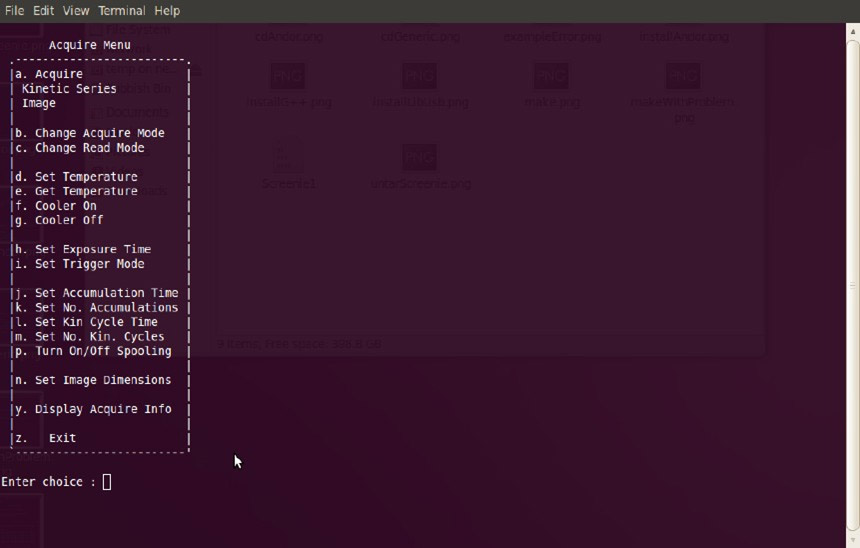Resources
 Part of the Oxford Instruments Group
Part of the Oxford Instruments Group
Expand
Collapse
 Part of the Oxford Instruments Group
Part of the Oxford Instruments Group
Many Linux users have an issue when using Andor SDK for Linux and Andor USB cameras. This usually occurs when the SDK has been installed and the user then tries to run an example. A common issue for Linux users operating their Andor CCD is the SDK returning an error when attempting to initialise the camera. The following will explain the common cause and how to get around it.
Note: This document will use Ubuntu to explain this issue as it is the most commonly used OS by our customers. There are slight variations on some of these instructions for other flavours of the Linux OS.
1. Extract SDK Tarball

2. CD into newly created Andor directory

3. Install SDK

Sudo is prefixed here to elevate privileges. User will be prompted for password at this point. Option 5 is chosen for USB cameras and the install process begins.
4. CD into one of the examples directory

5. Make example in order to run it

The first issue that may occur here is that the ‘make’ cannot be completed. This is because g++ is not installed on the system. The way to do this is to issue the following command:

After this the ‘make’ can be completed

6. Now that the executable exists, it can be called

The second issue that may occur is that the example will complain about no such file or directory and the DRV_XVDNOTINSTALLED error code will be returned. The reason for this is that the libusb source is not installed on the system. The camera relies on libusb in order to interact with the system. This is the most common cause of issues with the Linux SDK and USB cameras. It can easily be fixed!
7. Install libusb-dev

8. Run generic application

The purpose of this document is to outline a few of the causes and tackle them but it does not rule out all issues.
Note: In the case of specific OSs such as CentOS or Fedora, it may just be a case of changing ‘libusb-dev’ to ‘libusb- devel’. Also remember that Fedora expects you to add sudoers to the sudo file in order to elevate privileges. Another way of doing it is to type ‘su’ and give password. A lot of the commands above can be run then without the ‘sudo’ prefix in these OSs.
If you require further assistance, please contact your local customer support team.
Date: April 2022
Author: Andor Support Team
Category: Technical Article
